8/10/2020 10:29:03 AM
By Tim Aldridge
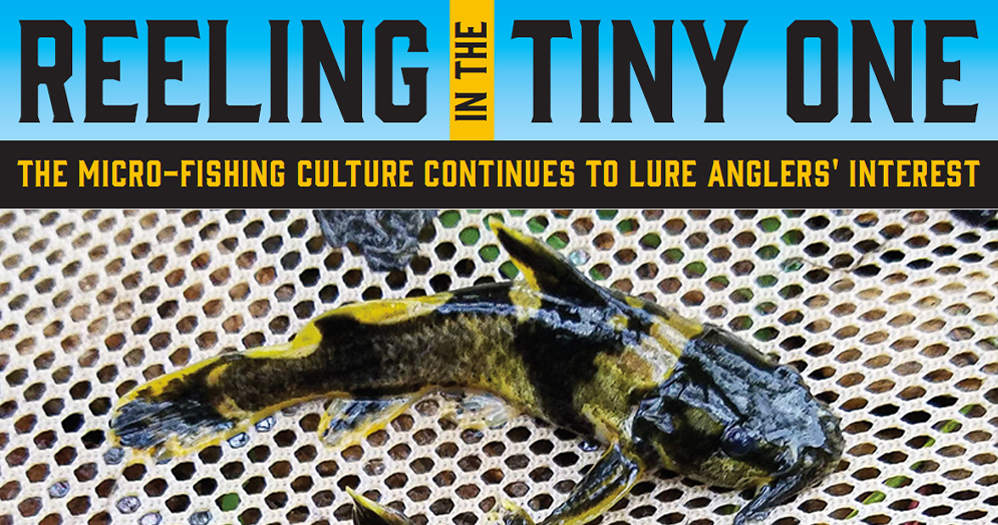
It takes the right tools, the right technique, and patience to land the big one. The same can be said when trying to land the small one.
Micro fishing, relatively new with a humble number of followers, is just like conventional fishing but with smaller line, hooks, and weights. It has experienced a surge in recent years and is popular with lifelisters, anglers who maintain a list of all the different species they have caught.
With more than 1,000 species of fresh-water fish in North America and a majority of them being small-bodied, there are ample opportunities to add to one’s lifelist. A majority of that diversity is concentrated in the southeastern United States, with more than 300 different species occurring in Mississippi, the fifth highest state for the number of fish species. Of those species found in Mississippi, most are small-bodied and are great micro-fishing targets. A majority of these fish are minnows (less than 8 inches), darters (less than 4 inches, small perch related to walleye), mad-toms (less than 6 inches, small catfish), and topminnows (less than 3 inches that swim on top of the water).
Gear and technique
Micro-fishing can be an intimidating way to fish, but you cannot go wrong if you keep it simple.
Rods: Collapsible crappie poles work well and are less expensive than rods made specifically for micro-fishing. I use 13- and 10-foot versions.
Line: Tippet material will suffice for most micro-fishing situations. I use a couple of different sizes: 1.7-pound and 2-pound.
Hooks: Many choices are available online, but size is the key. Size 30 are good for shiners (smaller minnows less than 3 inches) as well as most darter species. They are a little on the light side for adult Chub species (larger minnows more than 3 inches). Size 26 hooks or larger are for the chubs and sunfish. Some brands’ hooks come pre-snelled with around a foot of line, making it a good, easy choice and not difficult to tie.
Bait: Red worms are easy to put on the small micro hooks and stay alive longer than nightcrawlers. Though nightcrawlers will suffice, they are more difficult to put and keep on the hook.
With this setup (under $50), any angler can begin micro-fishing. Some people choose to also purchase small plastic phototanks to view and identify their catches. These are common enough now and can easily be carried in a cargo pocket to keep handy on the move.
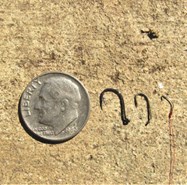 I have spent a lot of time honing my technique, and, eventually, I got better results. Soon I was catching madtoms and even darter species on the hook and my lifelist grew. I learned important tricks of the trade early on, such as not letting your shadow hit where you are fishing or moving the bait around if you aren’t experiencing results. I was learning most of these techniques on the go, as not much has been written on the subject of micro- fishing. After much trial and error, I was continually catching fish and adding to an ever-growing lifelist.
I have spent a lot of time honing my technique, and, eventually, I got better results. Soon I was catching madtoms and even darter species on the hook and my lifelist grew. I learned important tricks of the trade early on, such as not letting your shadow hit where you are fishing or moving the bait around if you aren’t experiencing results. I was learning most of these techniques on the go, as not much has been written on the subject of micro- fishing. After much trial and error, I was continually catching fish and adding to an ever-growing lifelist.
Building a lifelist
Not all micro-fish anglers are lifelisters. Some just enjoy the challenge of trying to catch different species. But those who are lifelisters can have lists that include more than a thousand species. Lifelisting easily can be compared to birdwatching, except you are using hooks instead of binoculars.
Learning different fish species’ habitat made micro-fishing easier and resulted in landing dramatically more species on my lifelist. For instance, some species prefer marshes or ponds, while others prefer flowing streams and rivers. Within the rivers and streams, some species tend to occupy fast-flowing rocky riffles, while others hang out in slow-moving pools. Even within the pools, certain species tend to stay near different substrates, like sand or gravel, while others always hang out near-vertical structure like woody debris or large rocks. Most of the information on where particular species hang out can be found in books, like the Inland Fishes of Mississippi by Dr. Stephen Ross.
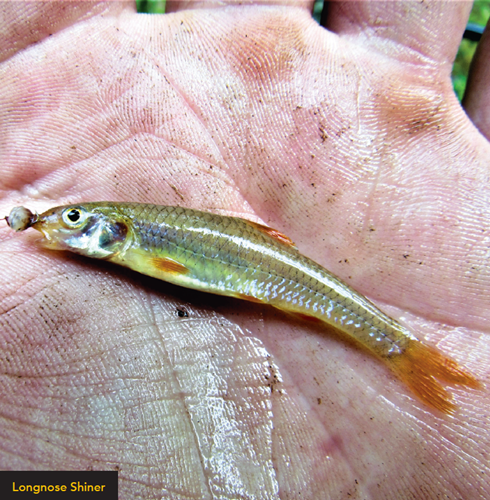
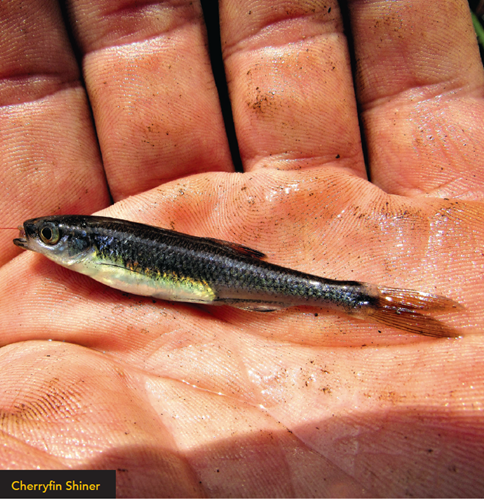
I started out in a backyard creek in Waxhaw, North Carolina, and my first target was one-inch Eastern Mosquito-fish, which are not too difficult to catch with bits of red worm. The downside to lifelisting is anglers often quickly catch most of the species in their general area. Traveling becomes a necessity to catch different species. But traveling also can be a fun part of it, seeing different places to catch fish. I have traveled from Lake Erie to the Florida Keys. I also have spent time in Tennessee, Alabama, and Georgia. My lifelist quickly grew to more than 350 species by the spring of 2019, just in time for the North American Native Fishes Association (NANFA) convention in Jackson.
NANFA’s annual convention always has been one of my favorite and most memorable events for the year. I had never been to Mississippi and was looking forward to catching some micro-fish while I was there. Traveling around the state, we caught Bluntface Shiners, Longnose Shiners, Cherryfin Shiners, and Longjaw Minnows. I waded a beautiful stream near Jackson on the second day of the convention and caught a Redspot Darter at the head of a riffle near a log. Darters became one of my favorite targets for micro-fishing as more than 300 different species of darters exist and their reduced/absent swim bladders make them hang out on the bottom. Also while in Mississippi, I found topminnow species quite easily and caught Blackspotted Topminnows and Bayou Topminnows. Stepping up the micro hooks to size 22, we caught
Not all micro-fish anglers are lifelisters. Some just enjoy the challenge of trying to catch different species. But those who are lifelisters can have lists that include more than a thousand species. Lifelisting easily can be compared to bird-watching, except you are using hooks instead of binoculars.
Learning different fish species’ habitat made micro-fishing easier and resulted in landing dramatically more species on my lifelist. For instance, some species prefer marshes or ponds, while others prefer flowing streams and rivers. With some beautiful Longear Sunfish and Dollar Sunfish, too.
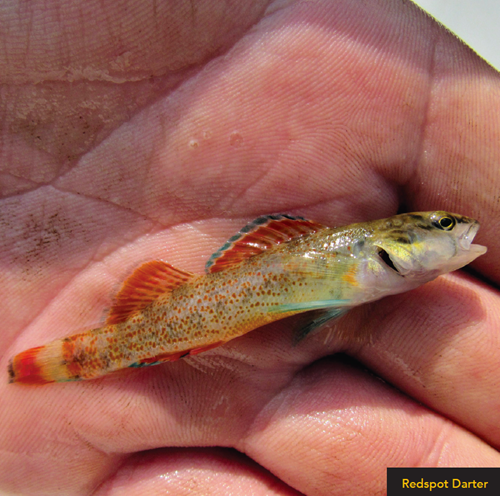
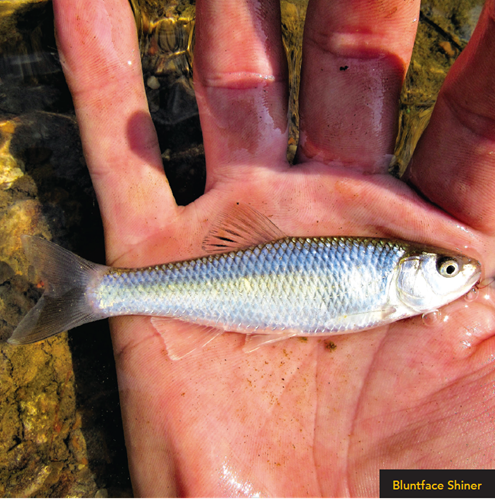
Because micro-fishing and lifelisting take up most of my free time, I plan trips a year in advance to places I have never been just to find a fish, catch it, take photos, and release it. It might seem bizarre to some people, and I get strange looks from time to time, but I find myself enjoying it more as my lifelist grows. Every time I fish, I learn something.
I am nearing 400 fish species on hook and line as I write this. My ultimate goal is to reach 1,000 species, and there are a select group of anglers who have already attained that number. My lifelisting mentor, who has nearly 1,200 species under his belt, taught me tremendous amounts of information and is still at it to this day, even being well into his 70s. I also find myself mentoring fledging anglers these days, and I enjoy that immensely. There is a lot to be learned from teaching as well, and I also enjoy the look on an angler’s face when catching a new species. I strongly encourage parents to try this with children as it can inspire them to learn more about the natural world, as well as how to identify wildlife, and, most importantly, get kids to spend more time outdoors.
Tim Aldridge, a North Carolina resident, is a freelance writer for Mississippi Outdoors. MDWFP’s Mississippi Museum of Natural Science ichthyologist and curator of fish Matthew Wagner contributed to this report.









